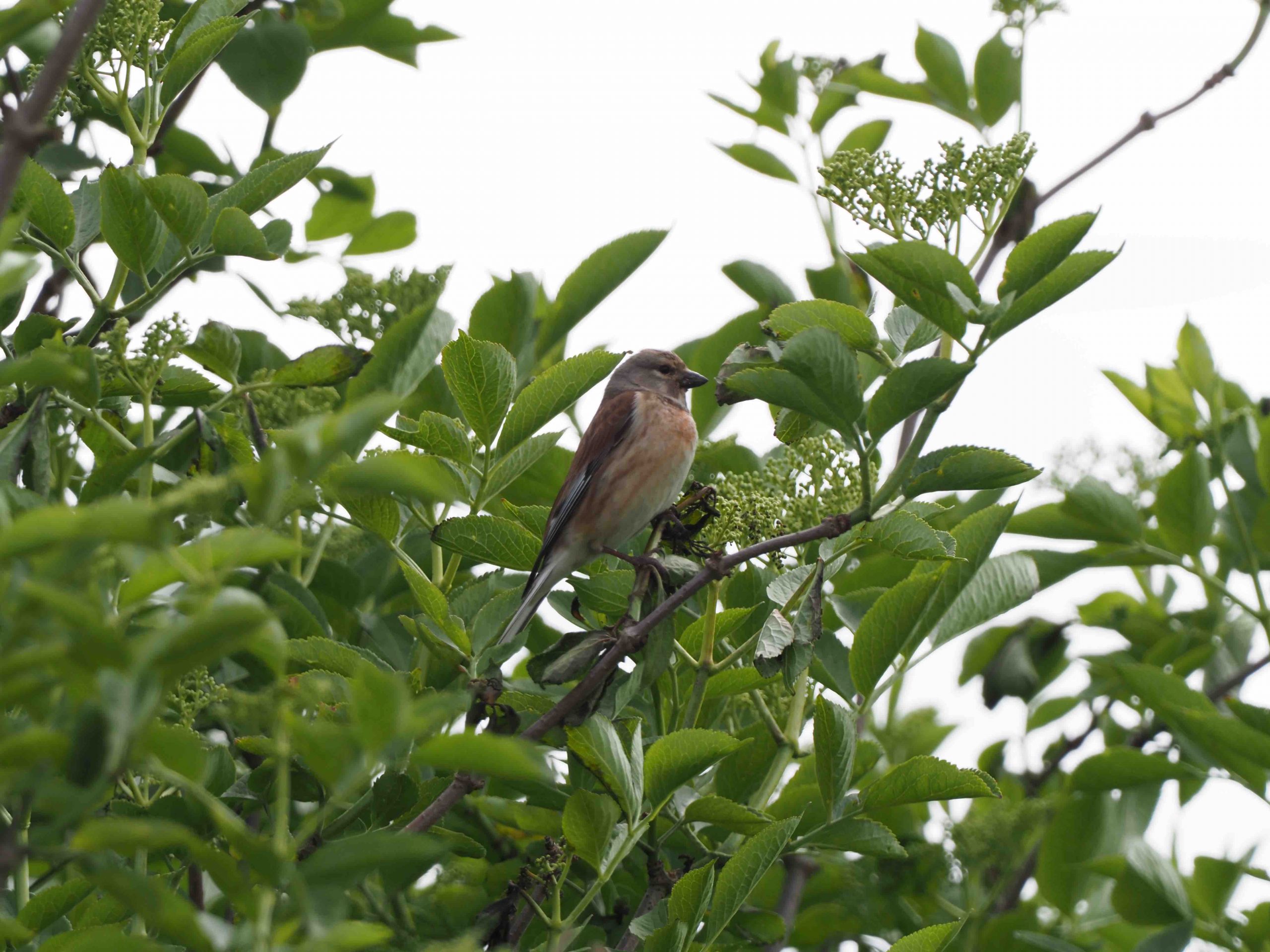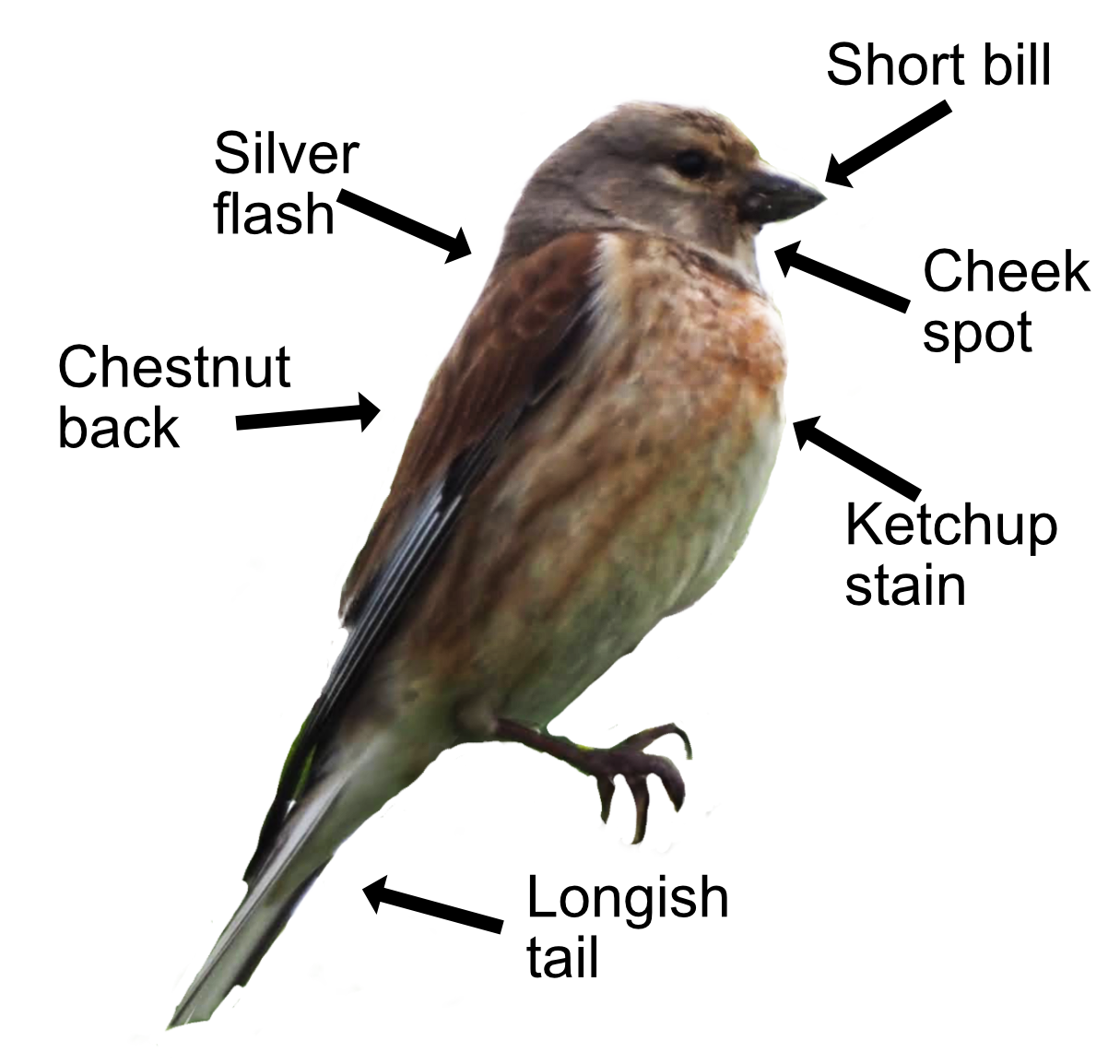
The Linnet is another poor bird that has suffered dreadfully at the hands of the dastardly Victorians, who liked to put them in cages. Thankfully, they are now protected. The countryside is the true home for the Linnet. They are widespread but incredibly hard to see as they are nervous of people (who can blame them) and will fly off before you are within 100 metres.
Linnets are smaller than a sparrow with a longish looking forked tail and short bill. The male has a chestnut back, crimson patches on his breast (like he has spilt tomato ketchup down his shirt), and a crimson forehead on a grey head. There is a characteristic light spot on each cheek and small silver flashes along the wings. The female is more streaked and lacks the crimson marks (as she is less of a messy eater). After moulting during July to October, the male looks more like the female. The Linnet's call sounds like a furniture mover saying, "to me, to you" mixed with some electric, buzzing notes. Their flight call is a clipped "ti-dit".

They eat weed seeds and plants like fat-hen, dandelion, chickweed, buttercup and oilseed rape. Linnets will join flocks of other seed-eaters, such as Chaffinches, Bramblings, and Greenfinches, when seeds are plentiful.
Linnets nest from April, usually in a group with other Linnets. The female builds the nest of twigs, roots and moss in dense cover like a hedge. She incubates the 4-6 eggs on her own, which hatch after 11 days. The male being too busy getting the ketchup stains off his shirt. Both parents feed the chicks. The youngsters can fly after 11 days, which is pretty quick, and it leaves time for them to have 2 or 3 broods. Out of the breeding season, Linnets can form large roosts with other finches.
They are partially migratory with some British birds moving south to Spain for tapas in some years and not in others, while other Linnets from Northern Europe migrate here. There are about 500,000 pairs in Britain. Linnet numbers have fallen recently and they are on the conservation 'Red List'. This is thought to be due to changes in farming and the use of herbicides, reducing the amount of weeds for them to feed on.
Their Latin name is 'linaria cannabina' where 'linaria' is the Latin for a linen-weaver, from 'linum' for 'flax' and 'cannabina' for 'hemp'. Aptly named after their love of weed seeds. The English name has a similar root, being derived from the Old French 'linette' for 'flax'.